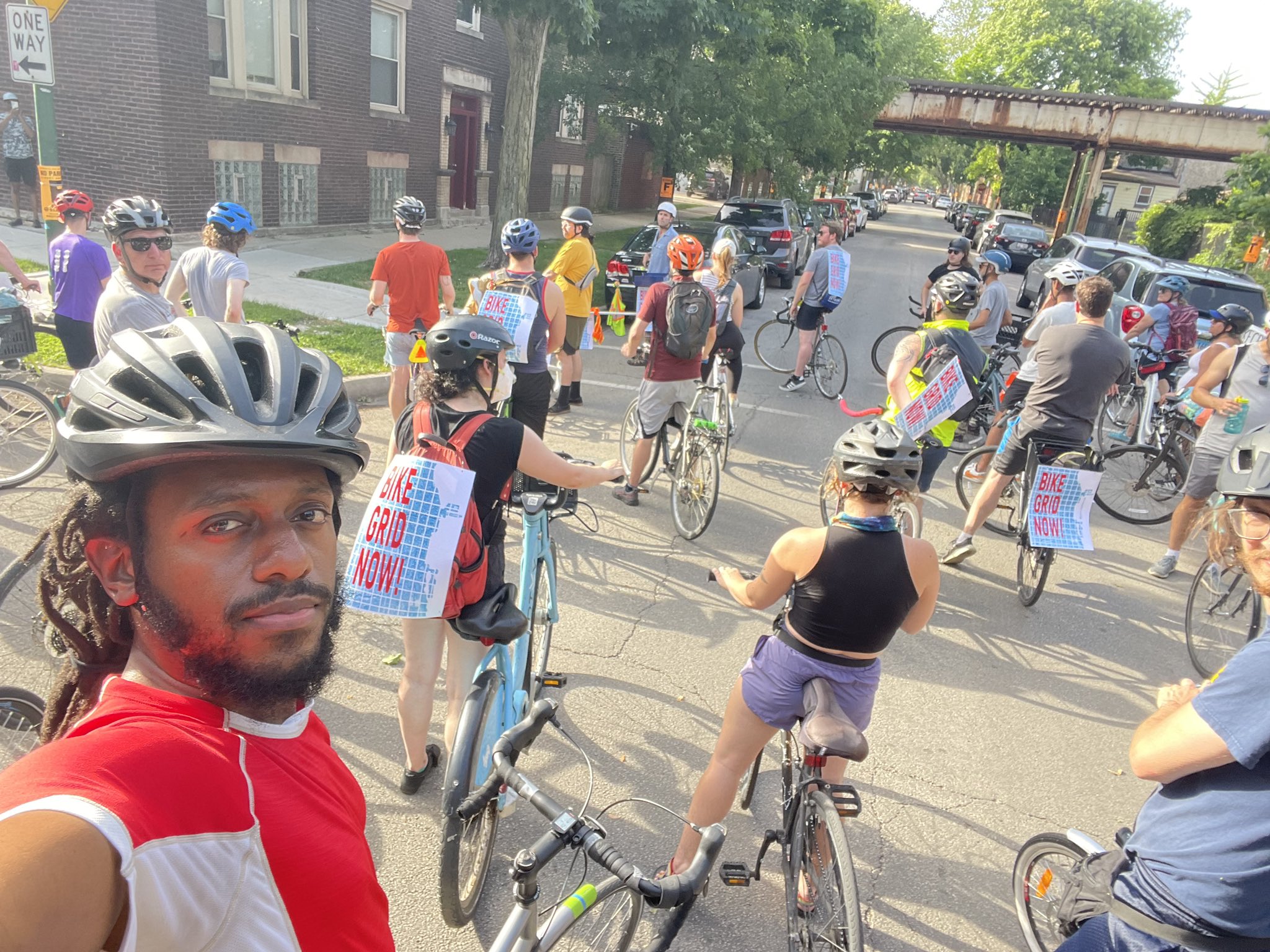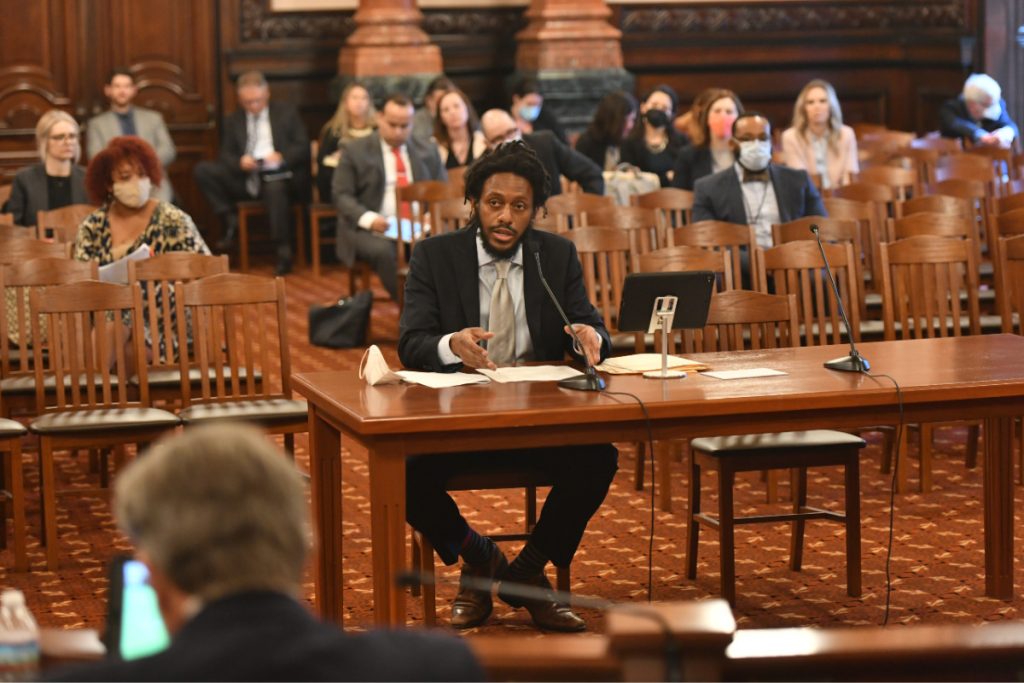Did You Know?
Legislating for livable communities: Sen. Simmons to be honored for transportation leadership

State Senator Mike Simmons understands that improving transportation is about more than just getting from point A to point B; it’s about transforming our communities into better places to live and work.
By championing biking, walking, and public transit, Sen. Simmons is working to reduce greenhouse gas emissions, improve public health, and save lives.
It’s this commitment to enhancing our communities through healthy, equitable transportation that earned him the Visionary Leadership Award from the Active Transportation Alliance. The award will be presented to him at the Movers and Shakers Ball on April 4.
Senator Simmons has enacted laws that prioritize sustainable transportation infrastructure and enhance public transit access for those who most need it.
A perfect example of this is his bill that made transportation more accessible for seniors and people living with disabilities, ensuring they remain integral parts of our communities.
In advance of the event on April 4, we had a conversation with Sen. Simmons about making biking, walking, and public transit better not just in the 7th district he represents, but throughout the state.
Active Transportation Alliance: As a lawmaker, you have a unique background in promoting equitable urban planning and serving in Chicago’s department of planning and development. How has this background influenced your priorities as a lawmaker?
Sen. Simmons: Growing up in Lincoln Square, I have been a rider of and depended on public transit my entire life and have been a cyclist since I was 5 years old. I use the CTA and other public transit all the time.
Prior to joining the senate, I developed a strong policy and planning base that enables me to run with really good, smart, forward-thinking policy in these areas.
I know enough from my time in the policy and planning roles to be able to push back on technical arguments and be pretty dangerous in aggressively and successfully pushing for accessible, sustainable, and equitable transportation! I also have a unique perspective as my lived experience is rooted in these issues.
We understand that you like to get around on your bike and participate in events like Bike the Drive. Can you share your biking habits and why you choose to bike?
I bike about 50 miles a week, sometimes double that. (But only when it’s above 50 degrees. I stopped riding in the winter and snow a few years ago). My bike habits are like my music playlists – irregular, eclectic, and always fun.
When I am not working on legislation or attending community events, block parties, or meeting with the many organizations in the 7th District, I try to find time to venture out, find trails and new street routes, and start pedaling.
I bike across Chicago. I bike along rivers and through forest preserves and marshes. Cycling is a time of reflection for me where I can truly take in the wonderful place we all live and constantly surprise myself with what I might find that I’ve never seen before.
I particularly look forward to Bike the Drive every year because I believe it gives a glimpse at the future of what Lake Shore Drive could be: a comprehensive, multimodal transportation way that supports cars, buses, and cyclists all the same.
View this post on Instagram
What needs to happen as a city and as a region to get more people to consider biking for transportation?
The largest barriers to cycling right now are safety and accessibility. Unfortunately, there have been too many incidents recently involving cyclists being hit that would never have occurred if we had better infrastructure.
We must do more to invest in road infrastructure that advances safety for cyclists and pedestrians alike, whether it be through installing more fully protected bike lanes and more advanced pedestrian safety technology.
Once we have a full Bike Grid that would allow cyclists to reach their workplace, school, and third spaces via a completely safe route, I believe more and more people will decide to bike over driving their car.
My vision points to Copenhagen. I’ve spent weeks there biking across the city and outer suburbs and it’s an empowering experience. Where they have a true bike grid that is connected and regular. We need bike highways too.
When I’m riding down Montrose or any arterial, I shouldn’t even have to think of getting doored.
You championed legislation abolishing the requirement for intersections to accommodate turns by the largest of our trucks on state roads. How do you get other lawmakers to understand the importance of legislation like this, which at first glance seems insignificant but actually can have a major impact on road safety?
I am very proud to have passed Senate Bill 2278 last year as it paves the way for complete streets that prioritize bikes, pedestrians, and public transportation just as much as cars.
For too long, streets have been designed with primarily automobiles and large trucks in mind, disregarding everyone who uses other forms of transportation.
SB 2278 allows local governments to design and construct non-highway state routes without having to accommodate large trucks between 55-65 feet in length. This reverses a 2017 law that imposed uniform design standards on roads to allow for large trucks, which poses safety issues for cyclists and pedestrians on those routes.
This bill was a tough sell and took countless hours of hard work and negotiation with the Midwest Truckers Association, the Illinois Truckers Association, Active Transportation Alliance, and other stakeholders.
I am so proud that we were able to advance this important legislation that helps communities all across the state better plan their roads, not just for large semi-trucks, but for those on foot, public transit users, and cyclists.
The way we get other lawmakers to understand is by talking to them, as I did, about their communities. The families, the small business owners, and neighbors. How they can be safer on all modes of transportation with complete streets.
Livability is something we all want for our communities.

You sponsored a new law to make it easier for people with disabilities and senior citizens to keep their free and reduced fare public transportation benefits. Why is it important for older people and people with disabilities to have easy access to transit?
Alongside safety, accessibility is one of the largest barriers that pushes people away from using public transit.
I passed Senate Bill 1892 last year that requires public transit agencies, including the RTA, CTA, Metra, and Pace to automatically renew Ride Free and Discounted cards for riders living with disabilities and seniors.
This bill came directly from constituents. In particular, one Rogers Park resident living with a disability asked me to introduce and champion this bill. I also received input from one of my constituent-member People’s Legislative Councils for people living with disabilities. One member shared that they had to provide evidence they have a disability every two years just to maintain their reduced fare status.
This was a true constituent-led effort that will ensure the countless public transit riders living with disabilities and our senior citizens have dignified access to transit. Many seniors and those living with disabilities don’t drive, can’t afford a car, or can’t operate them. So we should make it easy for them to access transit.
Each year we cast a spotlight on local champions working on behalf of better transportation options in the region. On April 4, we’ll be honoring Alderman Daniel La Spata, Senator Mike Simmons, and Metra. Come raise a glass to the honorees, participate in auctions, and enjoy a fun evening of connecting with fellow supporters of healthy, clean transportation options.
Photos courtesy of Sen. Mike Simmons.
Make a Donation
Your tax-deductible donation supports the important work that Active Trans does throughout the region
